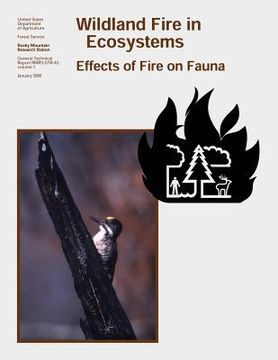Synopsis "Wildland Fire in Ecosystems: Effects of Fire on Fauna"
Fires affect animals mainly through effects on their habitat. Fire regimes-that is, patterns of fire occurrence, size, uniformity, and severity-have been a major force shaping landscape patterns and influencing productivity throughout North America for thousands of years. Faunal communities have evolved in the context of particular fire regimes and show patterns of response to fire itself and to the changes in vegetation composition and structure that follow fire. Animals' immediate responses to fire are influenced by fire season, intensity, severity, rate of spread, uniformity, and size. Responses may include injury, mortality, immigration, or emigration. Animals with limited mobility, such as young, are more vulnerable to injury and mortality than mature animals. The habitat changes caused by fire influence faunal populations and communities much more profoundly than fire itself. Fires often cause a short-term increase in productivity, availability, or nutrient content of forage and browse. These changes can contribute to substantial increases in herbivore populations, but potential increases are moderated by animals' ability to thrive in the altered, often simplified, structure of the postfire environment. Fires generally favor raptors by reducing hiding cover and exposing prey. Small carnivores respond to fire effects on small mammal populations (either positive or negative). Large carnivores and omnivores are opportunistic species with large home ranges. Their populations change little in response to fire, but they tend to thrive in areas where their preferred prey is most plentiful-often in recent burns. In forests and woodlands, understory fires generally alter habitat structure less than mixed severity and stand-replacement fires, and their effects on animal populations are correspondingly less dramatic. Stand-replacing fires reduce habitat quality for species that require dense cover and improve it for species that prefer open sites. Many animal-fire studies depict a reorganization of animal communities in response to fire, with increases in some species accompanied by decreases in others. Like fire effects on populations, fire effects on communities are related to the amount of structural change in vegetation.

